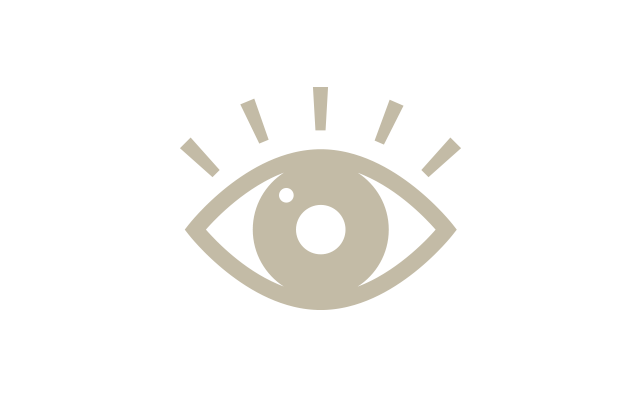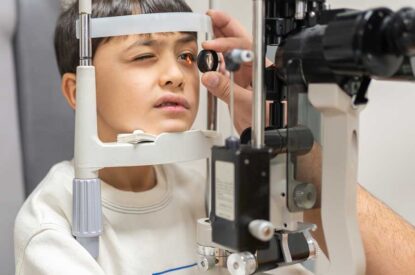
Types of Glaucoma
There are four major types of glaucoma:
- Open-angle glaucoma
- Angle-closure glaucoma, also called closed-angle glaucoma
- Congenital glaucoma
- Secondary glaucoma
Spacing: small
The two main types of glaucoma are Open-Angle and Angle-Closure. But did you know that there are at least eight additional types of glaucoma?
Most other types of glaucoma are variations of the open-angle or angle-closure types. These glaucoma types can occur in one or both eyes. What most types of glaucoma have in common is an increase of intraocular pressure (IOP), or pressure inside the eye.
Spacing: small
The Various Types Of Glaucoma

Open-Angle Glaucoma
Primary Open-Angle Glaucoma, the most common form of glaucoma and also called Open-Angle Glaucoma, is a lifelong condition that accounts for at least 90% of all glaucoma cases.
In Open-Angle Glaucoma, the eye’s drainage canals become clogged over time. This can damage the optic nerve.
With regular eye exams, Open-Angle Glaucoma may be found early and usually responds well to treatment to preserve vision.

Angle-Closure Glaucoma
The other main type of glaucoma is Primary Angle-Closure Glaucoma, also called Narrow-Angle Glaucoma.
In this type of glaucoma, the angle in many or most areas between the iris and cornea is closed, reducing fluid drainage and causing increased eye pressure
Acute Angle-Closure Glaucoma is a medical emergency that requires immediate medical attention.

Normal-Tension Glaucoma
In Normal-Tension Glaucoma, also known as Low-Tension Glaucoma, damage occurs to the optic nerve even though the eye pressure is not high.
The cause of Normal-Tension Glaucoma is unknown. Researchers are studying why some optic nerves are damaged by these relatively low fluid pressures.

Secondary Glaucoma
This is a form of glaucoma that has an identifiable cause for increased eye pressure that results in optic nerve damage and vision loss. For example, an eye injury, inflammation, and certain drugs may cause a Secondary Glaucoma.
Secondary Glaucoma includes Pigmentary, Congenital, Exfoliative, Neovascular, Uveitic, and Traumatic Glaucoma.

Pigmentary Glaucoma
Pigmentary glaucoma is a form of Open-Angle Glaucoma that occurs when tiny pigment granules on the back of the iris break off into the aqueous humor and become trapped in the eye’s drainage system. This leads to an increase in eye pressure and damage to the optic nerve.

Congenital Glaucoma
Congenital Glaucoma occurs in babies when there is incorrect or incomplete development of the eye’s drainage canals before birth. This leads to increased eye pressure that can damage the optic nerve.
Symptoms of Congenital Glaucoma include unusually large eyes, excessive tearing, cloudiness of the cornea, and sensitivity to light. This is a rare condition that may be inherited.

Exfoliative Glaucoma
Exfoliative Glaucoma occurs when a flaky material peels off the outer layer of the lens within the eye. The material collects in the angle between the cornea and iris and can clog the drainage system of the eye, causing eye pressure to rise.
This type of Open-Angle Glaucoma is known for causing more episodes of high pressure, fluctuations, and higher peak pressures than other types of glaucoma.

Neovascular Glaucoma
Neovascular Glaucoma is caused by the abnormal formation of new blood vessels on the iris and over the eye’s drainage canals. The new blood vessels block the eye’s fluid from exiting through the drainage canals, causing an increase in eye pressure.
Neovascular Glaucoma is always associated with other abnormalities, most often diabetes.

Uveitic Glaucoma
Uveitic Glaucoma is a result of an inflammation of the iris and other nearby structures in the eye. These structures become inflamed and disrupt fluid drainage out of the eye, or the steroid medication used to treat the inflamed structures can damage the drainage canals and result in increased fluid pressure.

Traumatic Glaucoma
Injury to the eye may cause Traumatic Glaucoma. This form of Open-Angle Glaucoma can occur immediately after the injury or develop many years later. It can be caused by blunt injuries that bruise the eye (“blunt trauma”) or by injuries that penetrate the eye.
Spacing: small
Related Information & Videos
Learn More

Rare Forms of Glaucoma
Although primary open-angle glaucoma is the most common type of glaucoma, there are many other types of eye disorders that fall under the spectrum of glaucoma.

Types of Pediatric Glaucoma
Glaucoma can affect people of all ages, including infants, children, and young people.

African Americans and Glaucoma
After cataracts, glaucoma is the leading cause of blindness in African Americans. Half of those with glaucoma don’t know they have it.